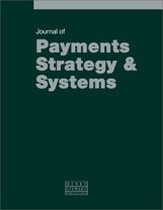Demystifying programmable money: How the next generation of payment solutions can be built with existing infrastructure
Abstract
As the conversation around programmable money has developed, many have argued that digital currencies built on distributed ledger technology — and the secure, automated, 24/7/365 and realtime environment this provides — are needed to unlock the solution. This paper, however, proposes an alternative way forward. Pointing to the various innovations developed and launched by the payments industry over the last decade, this paper argues that rather than waiting for digital currencies to reach maturity, it makes more sense to explore how existing payments tools can be used to create programmable money. Indeed, the paper suggests that by leveraging such recently delivered building blocks as instant payments, open-banking application programming interfaces and request to pay, the industry can create programmable money already — with the added benefit of faster time to market. Specifically, the paper contends that request to pay, and the underlying four-corner model that creates a level playing field for solution providers, is the best means to drive forward the programmable money journey.
The full article is available to subscribers to the journal.
Author's Biography
Erwin Kulk is Head of Service Development and Management at the EBA CLEARING Company. He has been working in the domain of interbank payment processing since 1998 and joined EBA CLEARING in 2012, where he initially supported the development of STEP2, the company’s pan-European automated clearing house, with a focus on supporting the Single Euro Payments Area migration. Since 2015, Erwin has been responsible for the EURO1 and STEP2 services as well as the development of new infrastructure services, such as RT1, the pan-European instant payment system that went live in November 2017.
Petra Plompen is a senior manager in the Service Development and Management unit of EBA Clearing, where she is involved in such initiatives as the R2P Request to Pay Service and immediate cross-border payments. She has 25 years of experience in transaction banking, including responsibility for the implementation of euro payments infrastructure developments at international banks.
